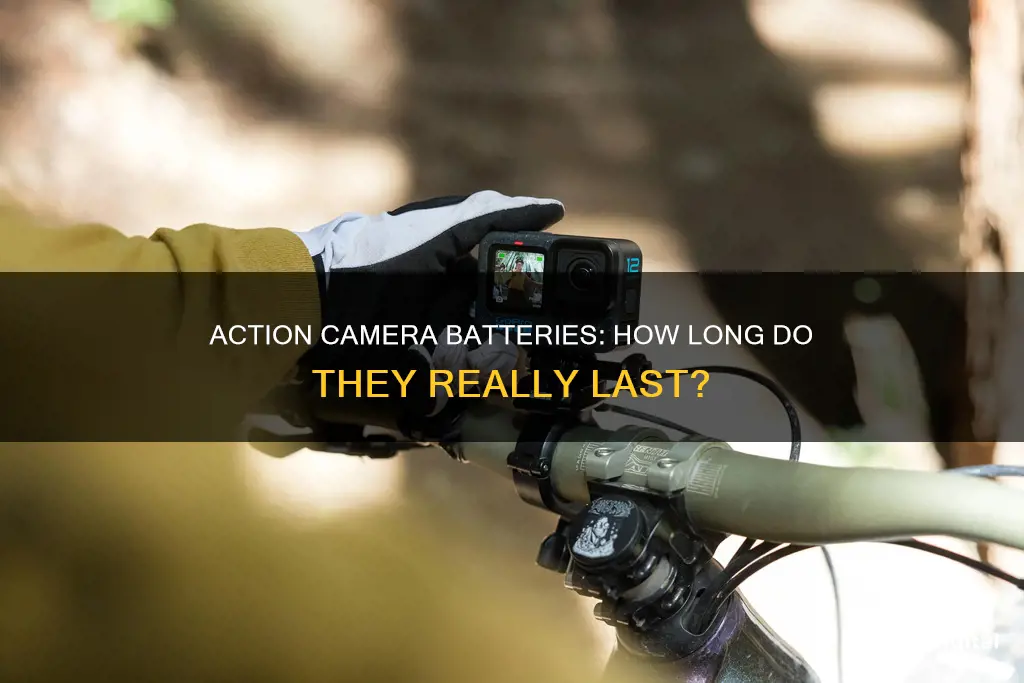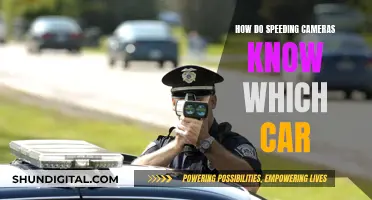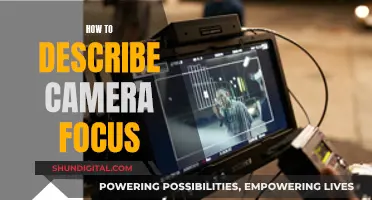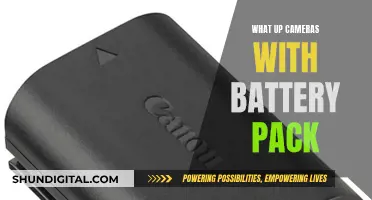
The battery life of an action camera varies depending on the brand, model, usage, and environmental factors. Most action cameras have a battery life of around 1-2 hours when recording continuously at 1080p resolution, while some high-end models can last up to 3-4 hours or more. The battery life can be affected by various factors such as the resolution, frame rate, Wi-Fi usage, and extreme temperatures. To extend the battery life, users can connect an external power supply or battery bank, carry spare batteries, or use a portable charger. Additionally, proper battery care and usage, such as avoiding complete discharge and overnight charging, can help maintain the battery's health and lifespan.
| Characteristics | Values |
|---|---|
| Average battery life | 1-2 hours when recording continuously at 1080p resolution |
| High-end models' battery life | 3-4 hours or more |
| Factors affecting battery life | Wi-Fi usage, GPS usage, image stabilization, extreme temperatures |
| Recommended for extended periods of use | Carry spare batteries or a portable charger |
| Battery capacity | Measured in milliampere-hours (mAh); higher mAh rating = longer battery life |
| Technology advancements | Lithium-ion batteries have higher energy density and longer life than older technologies |
| Recording resolution and frame rate | Higher resolution and frame rate = more battery power consumed |
| Wi-Fi and Bluetooth usage | Significantly affect battery life; power-saving modes available on some cameras |
| Cold weather and high altitude impact | Low temperatures and low air pressure reduce battery life |
| Mitigation strategies | Keep the camera warm, use a protective case, carry extra batteries or a portable charger |
What You'll Learn
- Battery life varies depending on brand, model, and usage, and environmental factors
- Wi-Fi and Bluetooth usage can drain the battery quickly
- Cold weather and high altitudes can significantly reduce battery life
- Using the LCD display consumes a lot of energy
- Non-rechargeable batteries are not ideal as they can run out after a few shots

Battery life varies depending on brand, model, and usage, and environmental factors
The battery life of an action camera varies depending on a multitude of factors, including brand, model, usage, and environmental factors. Generally, most action cameras have a battery life of around 1-2 hours when recording continuously at 1080p resolution. However, this duration can be significantly influenced by the specific brand and model of the camera, with some high-end models offering longer battery life of up to 3-4 hours or more.
Brand and model play a crucial role in determining battery life. Different brands utilise varying battery capacities, measured in milliampere-hours (mAh). Higher mAh ratings translate to longer battery life. Additionally, advancements in battery technology impact this factor; for instance, lithium-ion batteries offer improved energy density and efficiency, resulting in longer-lasting batteries.
Usage patterns also greatly affect battery life. Certain camera settings and features can drain the battery more rapidly. For instance, recording at a higher resolution and frame rate, such as 4K at 60 frames per second, will consume more power than lower settings. Additionally, enabling features like Wi-Fi, GPS, and image stabilisation can significantly shorten battery life. Continuous video recording and the use of additional accessories, such as on-camera monitors or video transmitters, will also impact battery duration.
Environmental factors, such as temperature and altitude, can also influence battery life. Extreme temperatures, both hot and cold, can affect battery performance. Cold weather, in particular, can significantly reduce battery life due to the impact of low temperatures on the chemical reactions within the battery. Similarly, high altitudes, where air pressure is lower, can also contribute to decreased battery life.
To maximise battery life, it is recommended to carry spare batteries or a portable charger when using an action camera for extended periods. Additionally, users can implement power-saving measures, such as turning off wireless connections, stabilisation, and image review when not needed, and limiting the use of the LCD display.
Testing Camera Battery Chargers: A Step-by-Step Guide
You may want to see also

Wi-Fi and Bluetooth usage can drain the battery quickly
Wi-Fi and Bluetooth usage can significantly affect the battery life of an action camera. When turned on, these features consume a lot of power, reducing the battery life of the device. For example, if you use your action camera to stream live footage to your smartphone or tablet, or to transfer files wirelessly, the battery will drain much faster.
To optimise battery life, some action cameras have power-saving modes that automatically turn off Wi-Fi and Bluetooth when not in use. Additionally, some models have removable batteries, allowing users to carry spare batteries and swap them out when needed.
It is worth noting that the impact of Wi-Fi and Bluetooth on battery life may vary depending on the specific action camera model and usage patterns. However, in general, extensive use of these features can significantly reduce the battery life of an action camera, which typically ranges from 1 to 3 hours. Therefore, it is essential to carefully manage your camera's battery usage to ensure it lasts as long as possible.
To further preserve battery life, you can connect your action camera to an external power supply or battery bank. Certain cameras also have a loop and dashcam mode, also known as car mode, which allows you to plug into the 12v cigarette lighter or USB sockets in your car to keep the camera continuously recording while on the go.
Charging Button Cameras: A Step-by-Step Guide
You may want to see also

Cold weather and high altitudes can significantly reduce battery life
Cold weather and high altitudes can significantly reduce the battery life of an action camera. This is because the chemical reactions required to generate energy become slower and less efficient in cold temperatures, reducing the capacity and discharge rate of the battery. The battery also becomes less mechanically stable, increasing the possibility of sudden failure.
To mitigate the effects of cold weather, it is recommended to keep the camera and battery warm. This can be done by using a protective case or keeping the camera close to your body. Carrying extra batteries is also advisable, as swapping them out can extend recording time. Additionally, consider using a battery blanket or insulated storage unit to provide extra insulation and protect the battery from the cold.
High altitudes can also impact battery life due to the decrease in oxygen levels in the air as altitude increases. This reduced oxygen level can cause the battery to reach its endpoint earlier or lead to false low battery signals. Therefore, when travelling to high-altitude locations, it is recommended to bring extra batteries as a precaution.
Overall, it is important to be aware of the negative effects of cold weather and high altitudes on battery life when using an action camera in these environments. By taking the necessary precautions, such as keeping the equipment warm and having spare batteries on hand, users can maximise their camera's battery life and ensure they can capture their adventures without constantly worrying about running out of power.
Disney's Camera Battery Chargers: A Photographer's Lifeline
You may want to see also

Using the LCD display consumes a lot of energy
The battery life of an action camera varies depending on several factors, including the brand, model, usage, and environmental conditions. One of the most significant factors affecting battery life is the power consumption of the camera's LCD display.
LCD (Liquid Crystal Display) screens use a backlight to illuminate the display. This backlight is a significant source of power consumption and can account for a large portion of the camera's overall battery usage. When the LCD displays a brighter image or a full-white screen, the backlight has to work harder, resulting in increased power consumption. Conversely, when the LCD displays a darker image or a full-black screen, the backlight uses less power, conserving battery life.
The impact of the LCD display on battery life can be significant, especially for action cameras with small batteries. To maximize battery life, it is recommended to reduce the brightness of the LCD screen and enable energy-saving features. Some cameras also offer a "sleep mode" that turns off the LCD screen after a short period of inactivity, further conserving battery power.
Additionally, using an external power supply or battery bank can extend the recording time of an action camera. Some cameras allow you to connect to a power source and record simultaneously, which is particularly useful for time-lapse photography or extended video recording sessions. Carrying spare batteries is also advisable when using an action camera for extended periods, as it ensures uninterrupted usage.
In summary, the LCD display of an action camera consumes a considerable amount of energy, affecting the overall battery life. By managing the brightness and utilizing power-saving features, users can optimize their camera's battery performance and prolong its usage time.
Charging the Panasonic Leica Dicomar Camera: A Step-by-Step Guide
You may want to see also

Non-rechargeable batteries are not ideal as they can run out after a few shots
Non-rechargeable batteries are not ideal for use in action cameras as they can run out of power after just a few shots, which can be incredibly frustrating if you're trying to capture a special moment or are in the middle of an activity. The last thing you want is to miss out on capturing a memorable moment because your camera battery died unexpectedly.
While some action cameras do feature built-in, non-removable batteries, many others provide the option to swap out batteries as needed. This is where rechargeable batteries come in handy. By investing in a set of rechargeable batteries and a good charger, you can ensure your action camera always has the power it needs to keep shooting.
Rechargeable batteries typically come in packs of two or more, allowing you to charge one set while using another. This simple strategy can significantly extend your camera's runtime, ensuring you don't miss any important shots. Additionally, rechargeable batteries are often designed to provide a higher capacity than standard non-rechargeable batteries, further increasing the time you can spend filming or taking photos.
It's worth noting that some action cameras are compatible with external power banks, which can be a great backup solution if you're unable to swap out batteries. However, this approach may not be ideal for all situations, especially if you're engaging in activities where the camera might get knocked around, as the power connection could accidentally become dislodged.
In conclusion, while non-rechargeable batteries might be suitable for some devices, they are not ideal for action cameras due to their limited capacity and inability to be recharged. By opting for rechargeable batteries, you can enjoy longer filming sessions and have peace of mind knowing you're prepared for any unexpected situations that may arise.
Charging the Heimvision Camera: A Step-by-Step Guide
You may want to see also
Frequently asked questions
The battery life of an action camera depends on various factors such as the brand, model, usage, and environmental conditions. Generally, most action cameras have a battery life of around 1-2 hours when recording continuously at 1080p resolution. However, some high-end models can last up to 3-4 hours or more.
To extend the battery life of your action camera, you can turn off features such as Wi-Fi, GPS, and image stabilization, which consume a significant amount of power. Additionally, you can connect an external power supply or battery bank to your camera if it supports this feature. Carrying spare batteries or using a portable charger is also recommended for extended periods of use.
Several factors can impact the battery life of an action camera, including the battery capacity, technology advancements, recording resolution, frame rate, and environmental conditions. Extreme temperatures, such as cold weather and high altitudes, can significantly reduce battery life. Properly storing and maintaining your batteries can help extend their lifespan.







